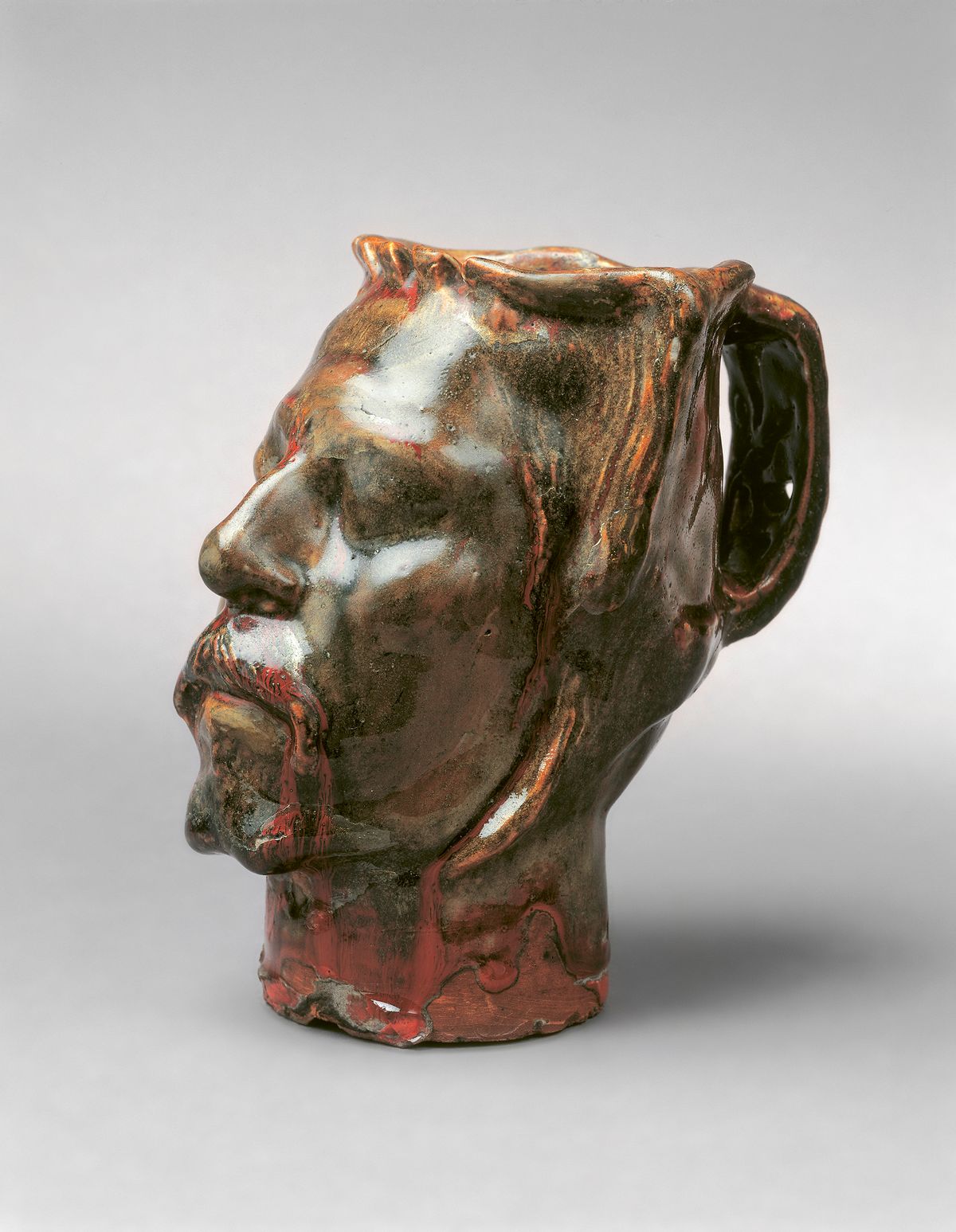Although the story of Van Gogh cutting off most of his ear is legendary, what has attracted little attention is that four days later, his colleague Paul Gauguin—who had discovered Van Gogh the morning after the incident—went to great efforts to attend a guillotining in Paris. This was the execution of a murderer known as Prado, who had brutally cut the throat of a female companion.
It was a truly bizarre sequence of events. Van Gogh and Gauguin, who were living and working together in the Yellow House in Arles, had a row during the evening of 23 December 1888. Gauguin stormed out, spending the night in a local hotel. Van Gogh, who was experiencing a sudden mental health crisis, then mutilated his ear.
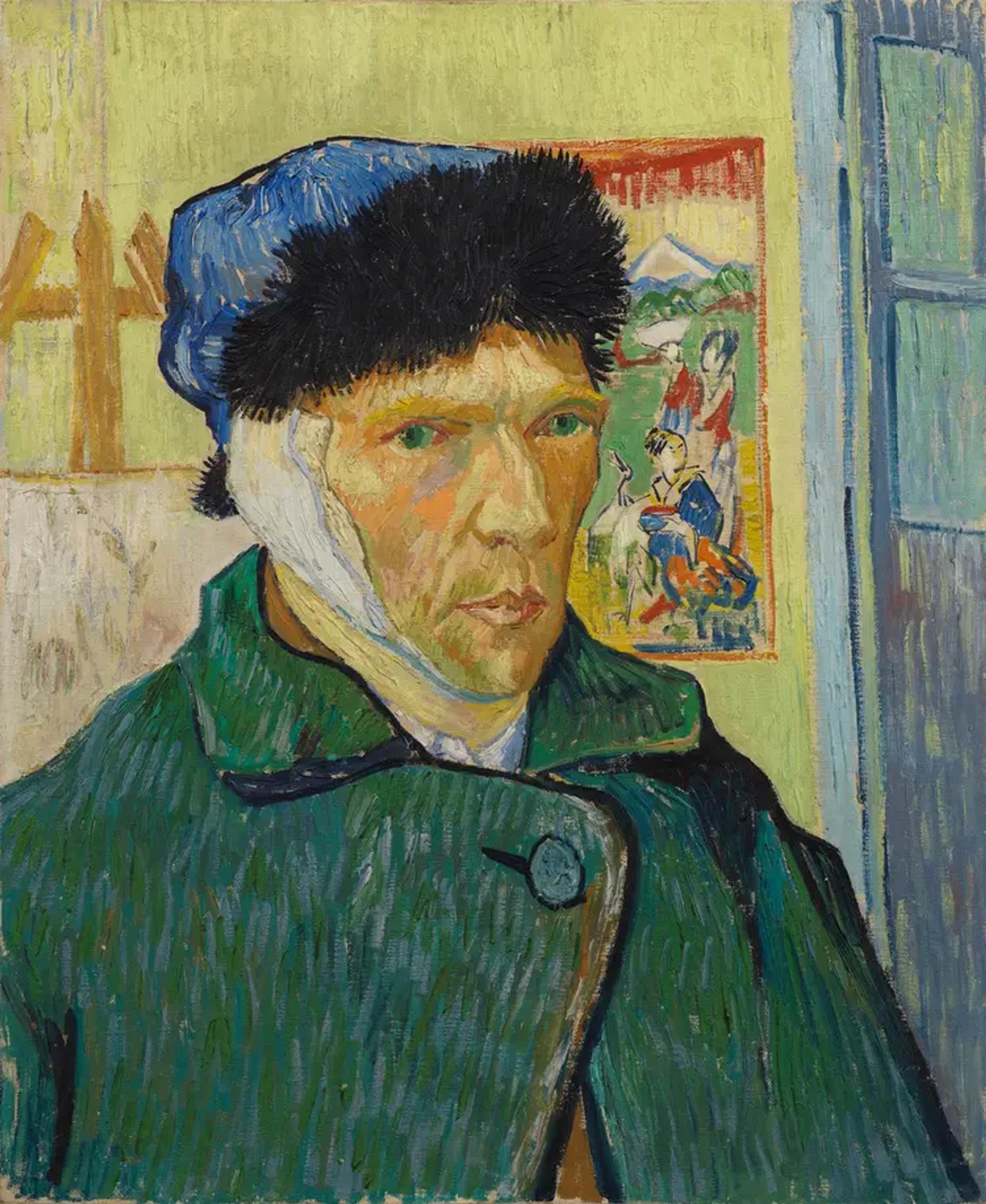
Van Gogh’s Self-portrait with Bandaged Ear (January 1889)
Courtauld Gallery, London
Gauguin returned from the hotel the next morning, finding Van Gogh lying severely wounded on his bed. Vincent was then taken to hospital and his brother Theo was summoned, arriving from Paris on Christmas Day. Theo and Gauguin left that evening, arriving back in the capital on 26 December.
The following evening Gauguin was drinking in the Café de la Nouvelle Athènes, a haunt much frequented by the Impressionists and avant-garde artists. He presumably met friends and told them about the terrible events in Arles.
Soon after midnight Gauguin was given a tip-off in the café by a municipal guard: Prado was to be executed at dawn. The murder case had been front-page news, so he and Van Gogh must have read about it in Arles. It was the Parisian equivalent of London’s Jack the Ripper.
Prado (a pseudonym, his real name is still unknown) had slit the throat of Marie Aguétant in 1886. The frenzied attack was brutal, leaving a very deep gash in her neck.
Gauguin rushed from the café to the Place de la Roquette, just outside the prison, arriving at 2.30am in the morning. He was suffering from little sleep: four nights earlier he had fled to a hotel, then he must have had a sleepless night awaiting Theo, followed by a night on the train and finally a night staying with a Parisian friend, probably fellow artist Emile Schuffenecker. Yet despite all this, he was willing to stand awake for hours in the December cold.

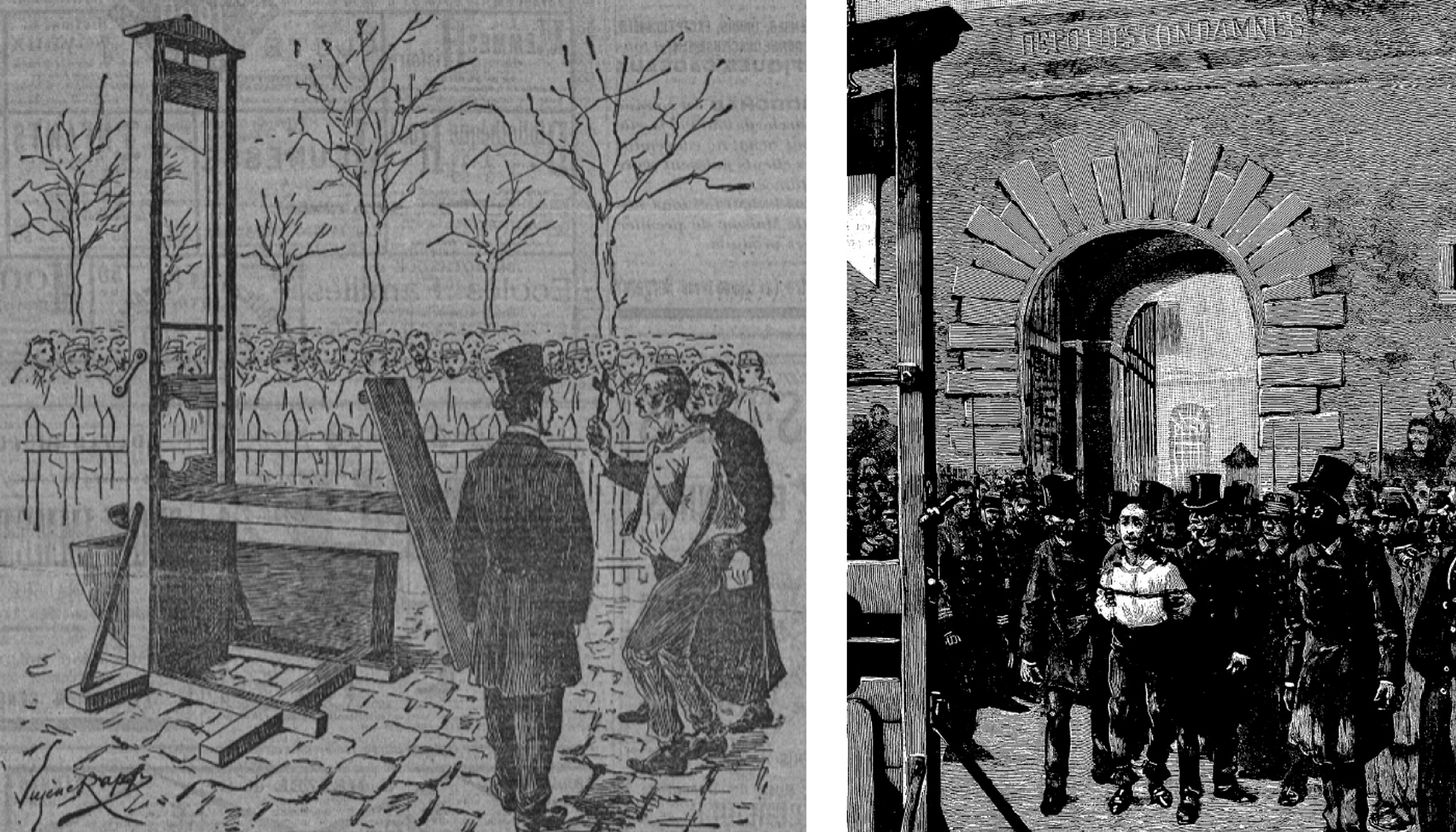
Newspaper images of the execution of Prado, 28 December 1888 Le Cri du Peuple (29 January 1889), Recueil: Assassinats et crimes divers (January 1889), L’Intransigeant (29 December 1888), and L’Univers Illustré (5 January 1889)
As the sun was about to rise, Gauguin recalled the scene outside the Roquette prison in his 1903 memoir, Avant et Après: “The prison gates opened and the guard began to march out… When I want something I am very obstinate. I dashed across the square (breaking the respectful silence) and, dodging between the two boots of a gendarme, reached the centre [of the square].”
Gauguin then described the horrific scene which he had apparently witnessed: “The board [blade] wavered so that instead of the neck it was the nose that was hit. The man struggled with pain and the two blue-smocks [assistant executioners] brutally pushed on his shoulders, bringing his neck into its proper place. There was a long minute, and at the end the blade did its duty. I struggled to see the head lifted out of the box.”
Curiously, Gauguin’s account of the guillotine slicing Prado’s nose does not figure in the extensive press reports of the execution. The press instead wrote about how the executioners forced Prado’s neck into the support. This discrepancy suggests that Gauguin, who may not have been ideally placed to view the scene, imagined the horrendous detail he recounted.
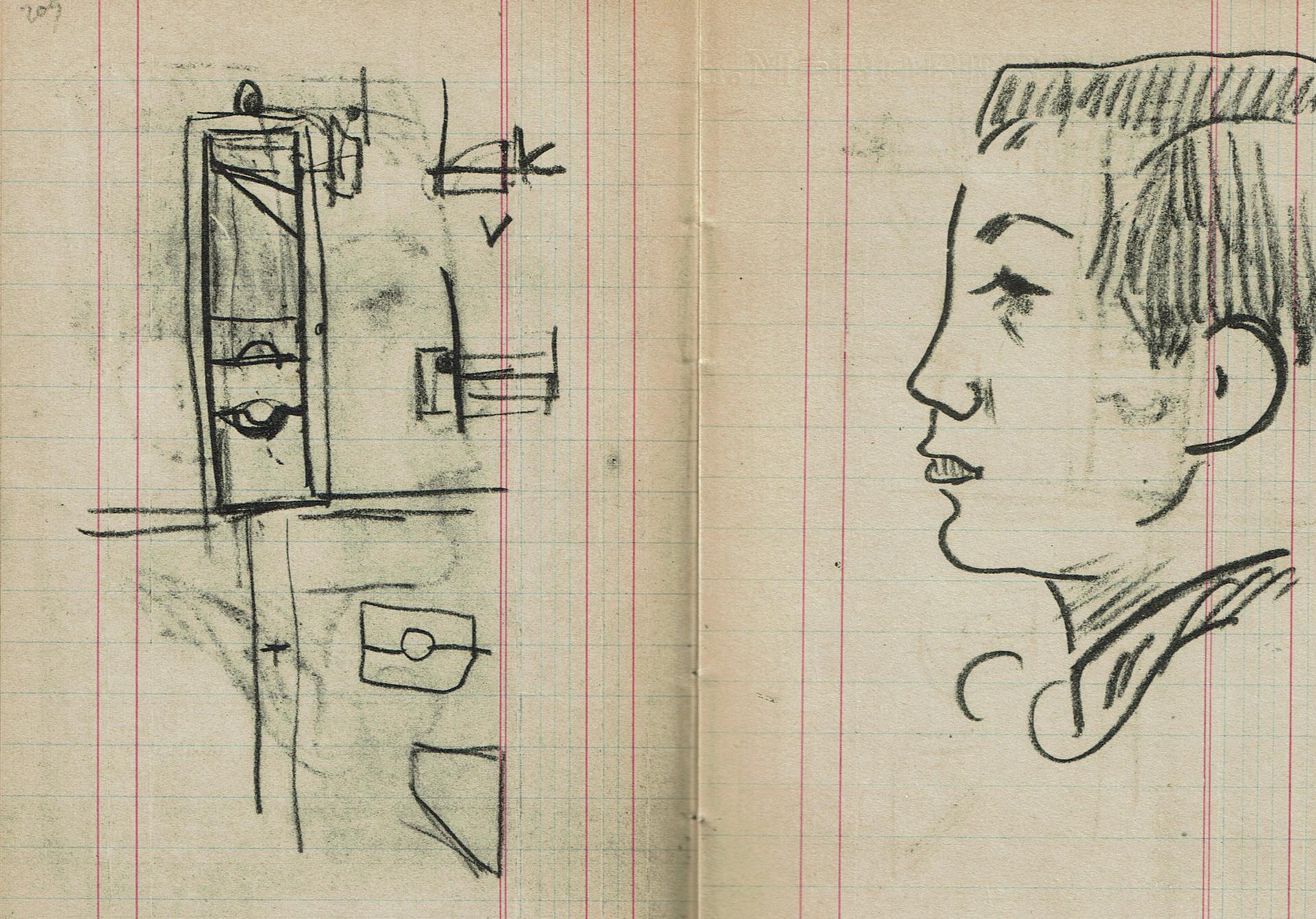
Paul Gauguin’s sketch of a guillotine, drawn opposite a head (probably 28 December 1888)
René Huyghe, Le Carnet de Paul Gauguin, Paris, 1951
What followed next may also come as a surprise. Around a month after the execution, Gauguin crafted a ceramic jug in the form of a self-portrait of his own head, with his distinctive features. At first glance, he seems asleep, since his eyes are closed. But look closer, and he is dead. Rivulets of blood drip down his neck; some from his nose and mouth, the rest from his ears. The ears are abbreviated, being little more than protuberances. Of course one thinks of the fate of his friend Van Gogh.
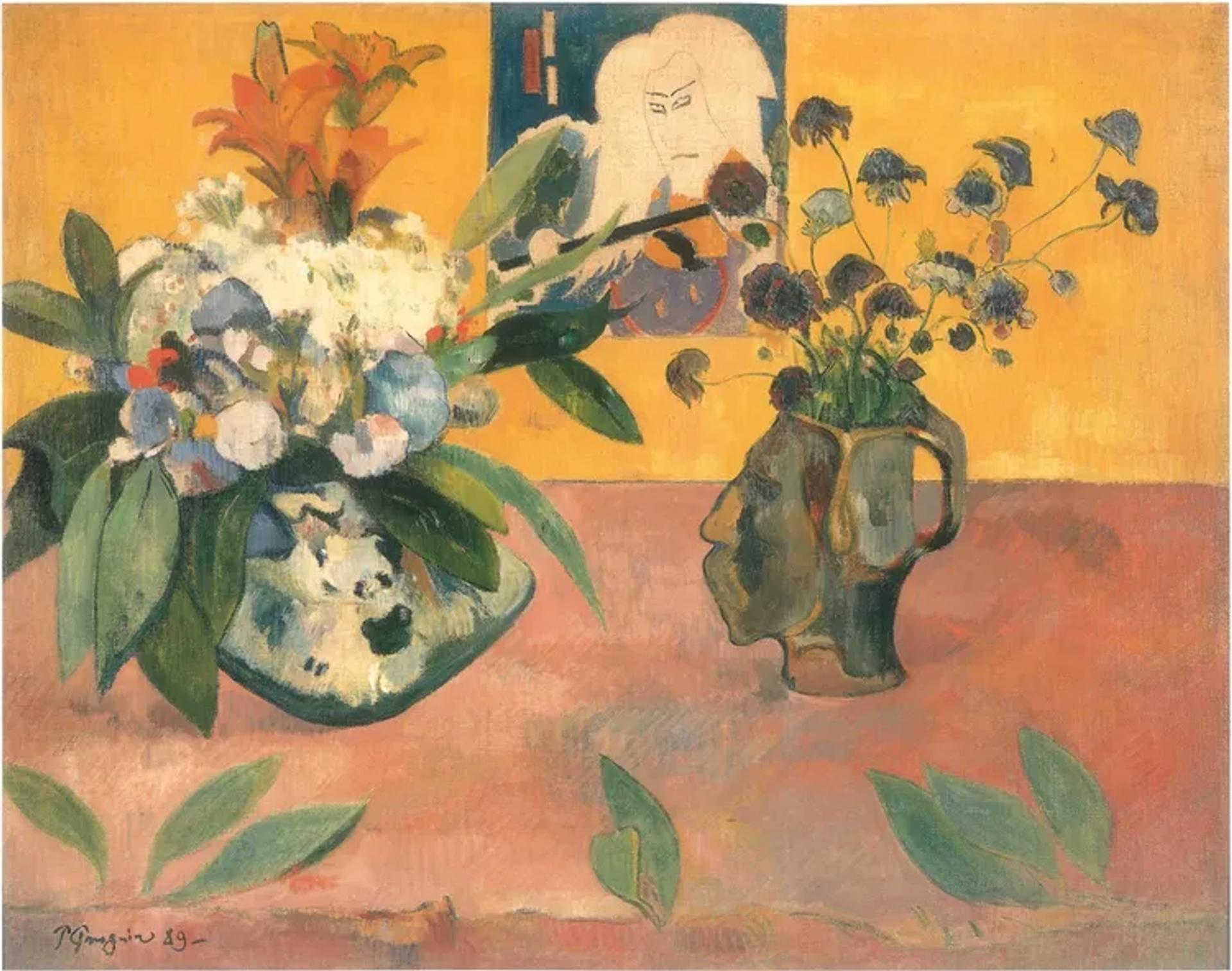
Gauguin’s Still life with Japanese Print (spring 1889)
Tehran Museum of Contemporary Art
The jug was an important object for Gauguin. A few months later he depicted it prominently in a still-life painting, with flowers sprouting in the pot. This picture is not well known, since it is in Iran. In the 1970s it was bought by the wife of Shah Mohammad Reza Pahlavi and is now in the Tehran Museum of Contemporary Art.
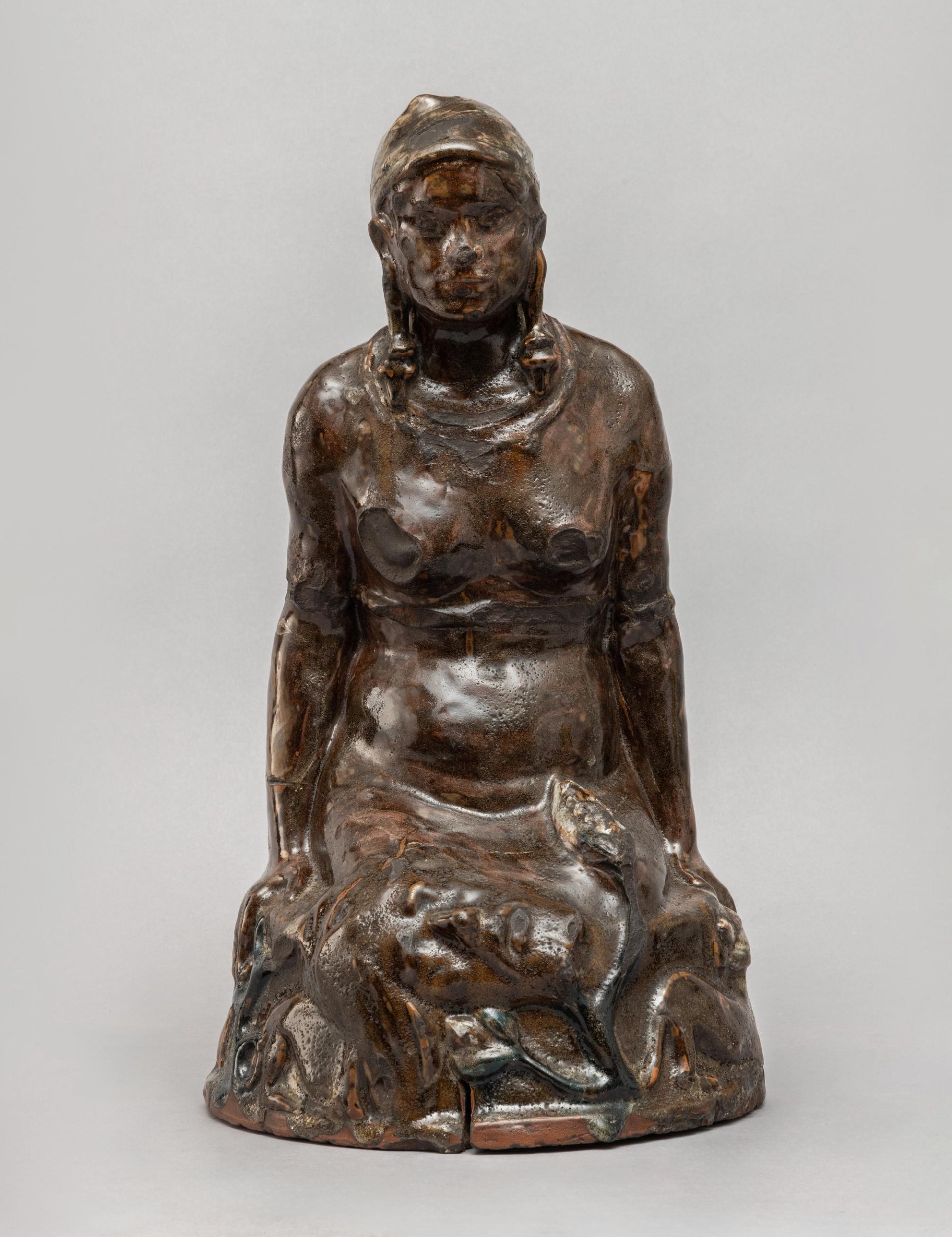
Paul Gauguin’s The Black Woman (La Femme Noire) (Summer 1889)
Sotheby’s, New York
And there is another ceramic which also has links with the jug sculpture, one which will be auctioned at Sotheby’s next month. A few months after crafting the jug, Gauguin made The Black Woman, in which a Martinique female cradles the apparently severed head of a European man, who may possibly bear Gauguin’s features. It is coming up at Sotheby’s, New York on 18 November, from the collection of Harry Frank Guggenheim, and is estimated at $700,000-$1m.
A Sotheby’s spokesperson describes The Black Woman as “blending references to Venus with allusions to biblical narratives, particularly the beheading of John the Baptist, as well as Gauguin’s own experience witnessing the beheading of notorious murderer Prado”.
Gauguin’s art is idiosyncratic and often ambiguous, never more so than in the case of his Self-portrait Jug. Its meaning remains elusive, but it must have been inspired by his complicated thoughts surrounding Van Gogh’s self-harm and Prado’s guillotining.
We will never know what it was that impelled Gauguin to attend the Paris execution after the traumatic events in the Yellow House. He later claimed that he had left Arles because Vincent did not want him to visit him in hospital: “If he sees me, this might prove fatal for him”.
But Gauguin could at least have remained in Arles, to be at hand if any assistance was required and to help keep Theo informed. Instead, he heartlessly quickly fled to Paris.
Other Van Gogh news:
- An American astronomer says that he has identified the time and place in Nuenen where Van Gogh made Lane of Poplars at Sunset (normally dated to October 1884), which is at the Kröller-Müller Museum in Otterlo, in the Netherlands. Texas State University professor Donald Olson writes in the November issue of Sky & Telescope that it was painted in Weverstraat in the evening of 13 or 14 November 1884 (based on the position of the road and the sunset). This conclusion assumes that Van Gogh witnessed the sunset in the very place he depicted in the painting. But can we be certain that Van Gogh painted an actual sunset on this spot? More likely, he added it for artistic effect.
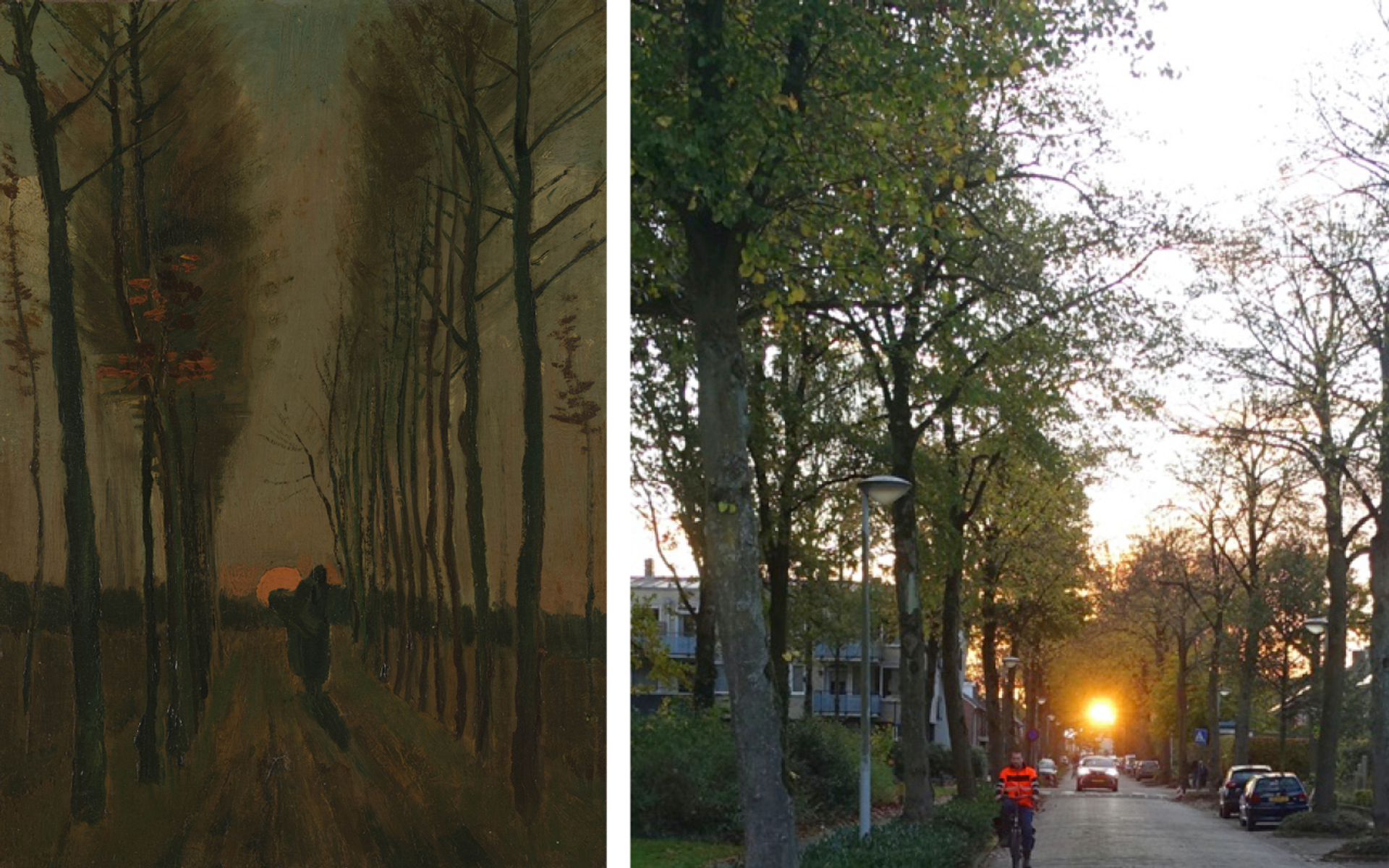
Van Gogh’s Lane of Poplars at Sunset (October-November 1884) and a photograph of Nuenen’s Weverstraat with a sunset
Kröller-Müller Museum, Otterlo (photograph Rik Klein Gotink)
Louis Verbrack, Eindhoven
- A film on the National Gallery’s five-star exhibition Van Gogh: Poets & Lovers will be screened in UK cinemas from 6 November. Directed by David Bickerstaff and produced by Phil Grabsky, it is one of the highly successful “Exhibition on Screen” films.
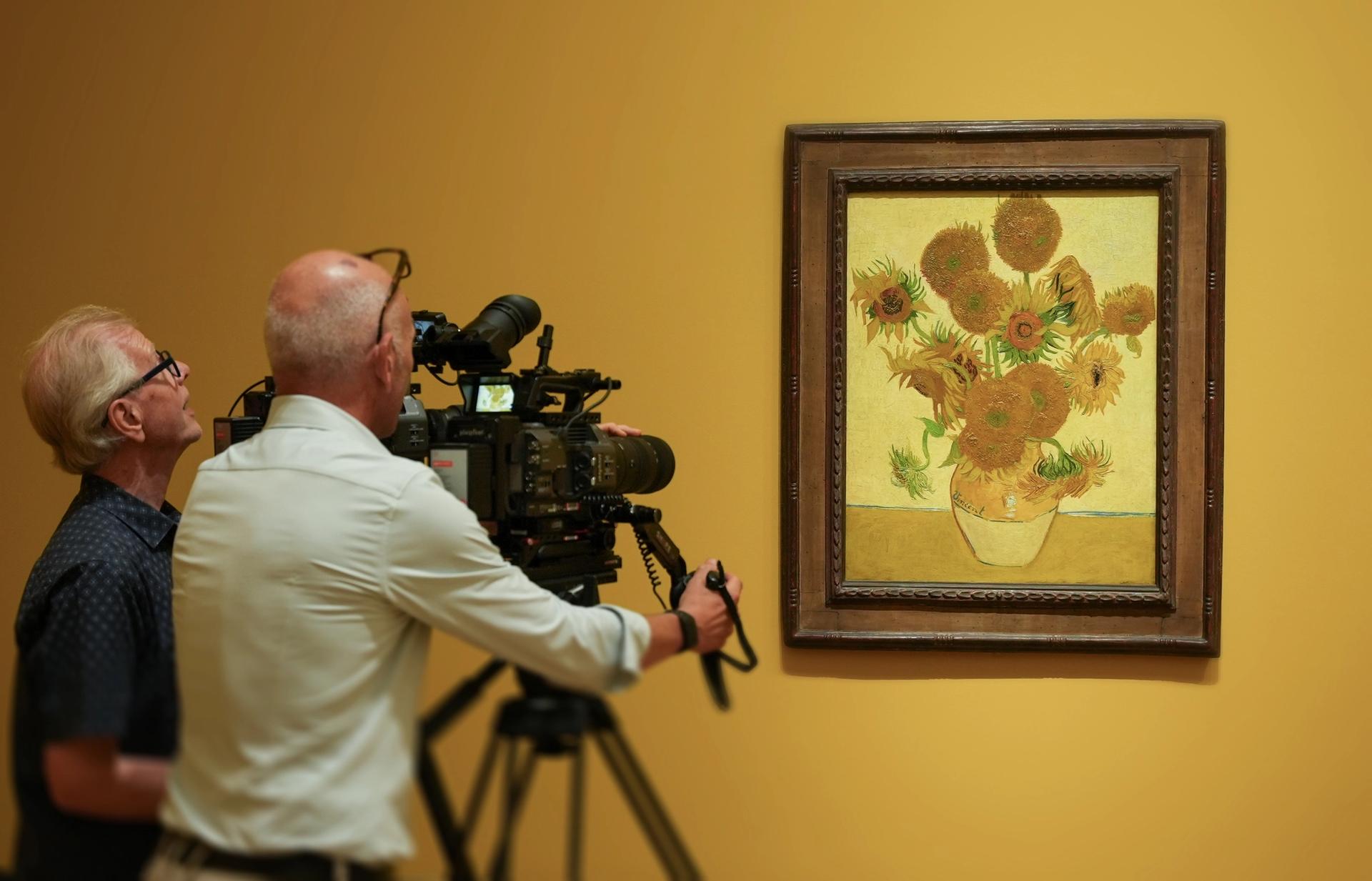
Filming “Exhibition on Screen” at the National Gallery, with Phil Grabsky (on the right), October 2024


